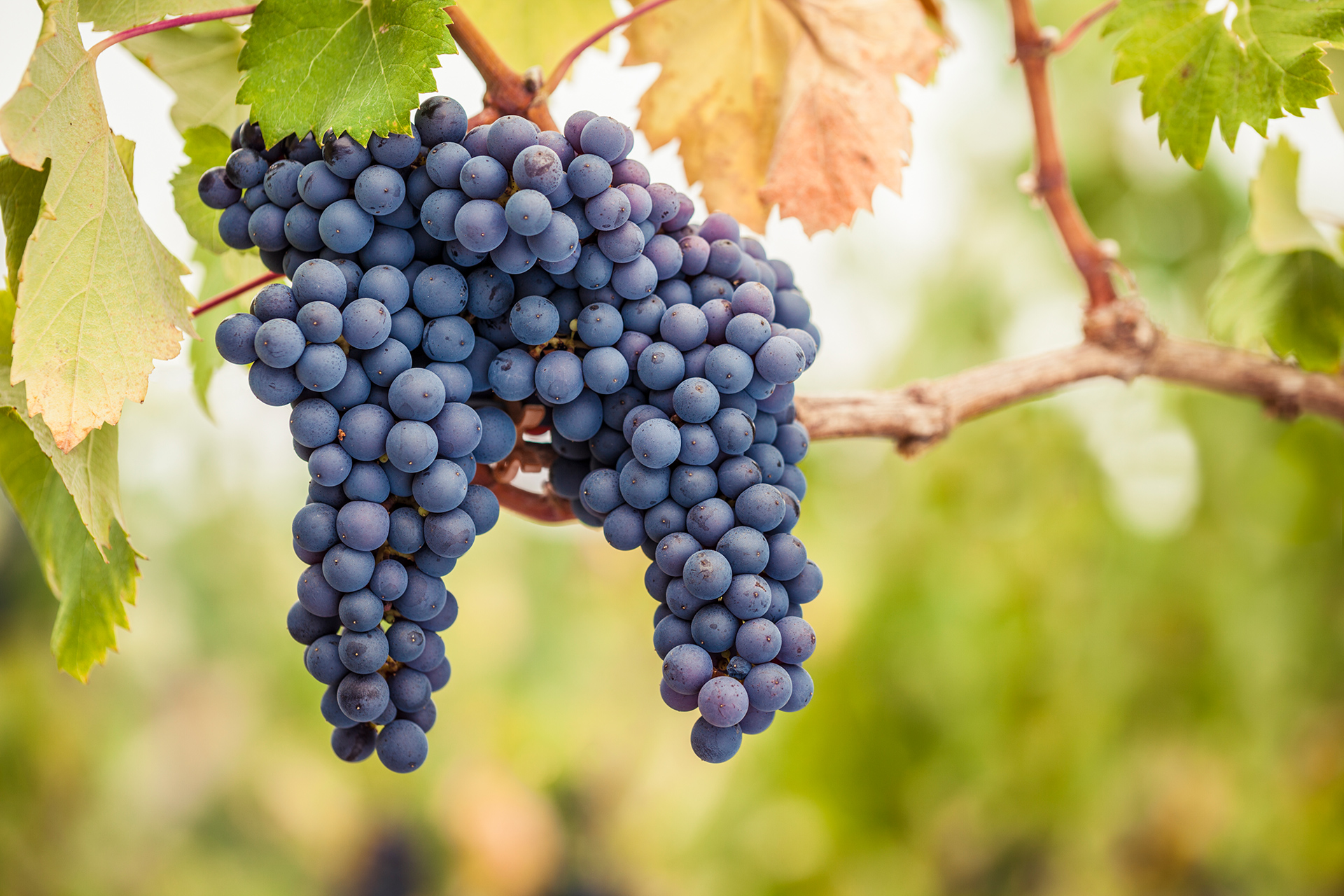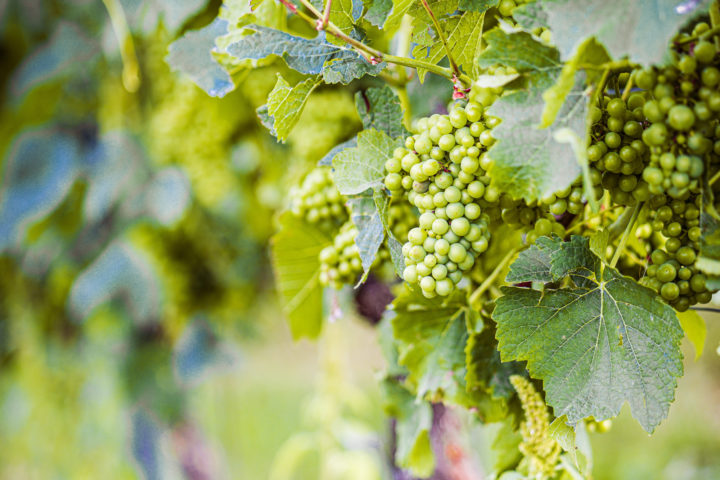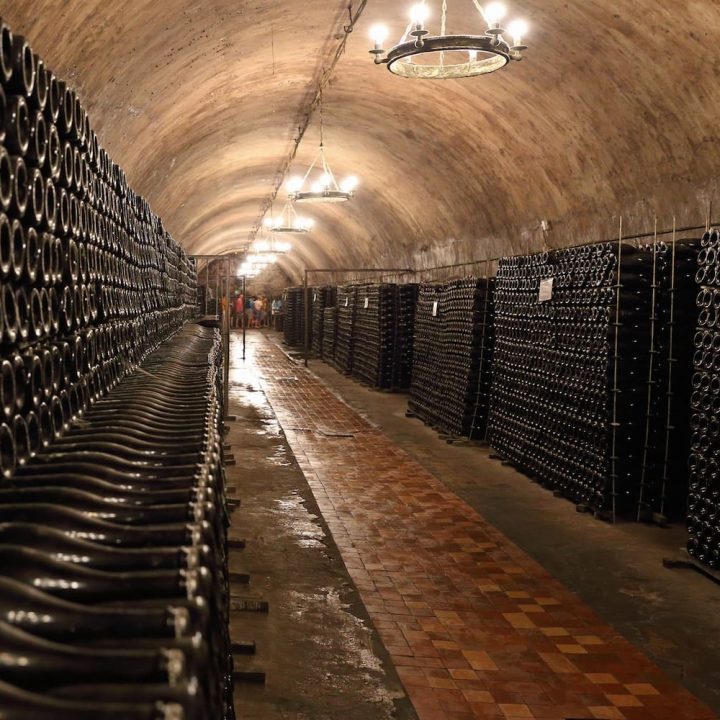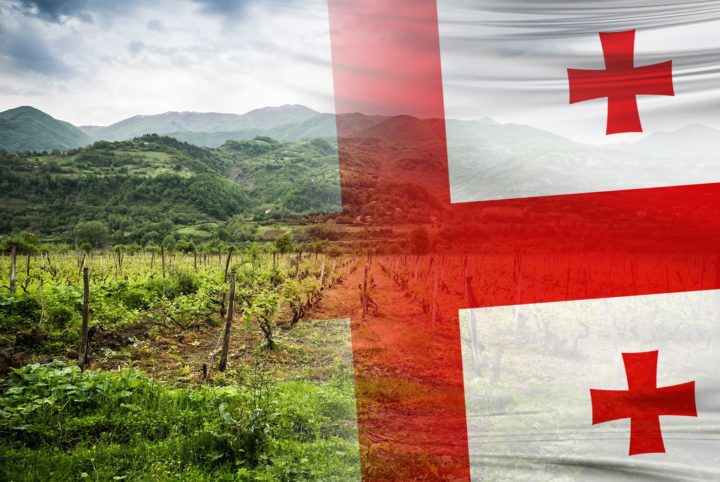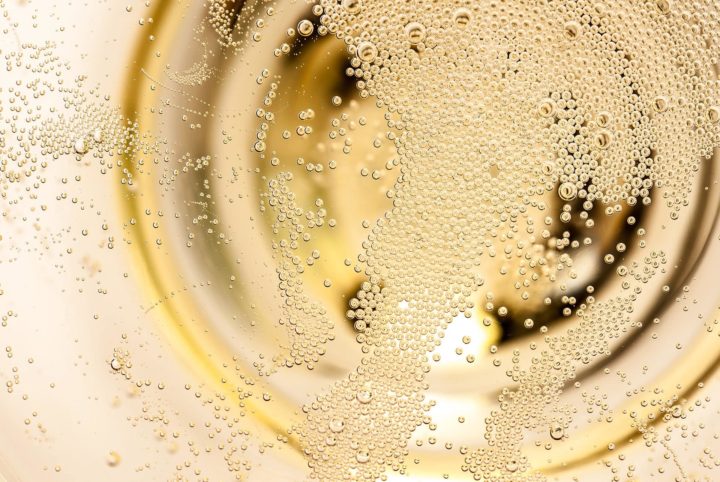Pinot Noir, better known in Germany as Spätburgunder, is one of the oldest grape varieties and is considered by wine connoisseurs to be the noblest and finest of all red grapes. For this reason, wine drinkers like to call it the “king of red grape varieties”. And as befits nobility, it is not entirely easy to handle. Pinot Noir is considered particularly difficult to grow and is very demanding in terms of its location, the prevailing climate and soil conditions. Under good conditions, which he finds in his French homeland of Burgundy, for example, he produces world-class wines such as the legendary Pinot Noir of the eponymous Château de la Romanée-Conti winery.
His wines are characterized by a transparent, light to ruby red color in the glass. Unlike most red wine grapes, Pinot Noir prefers a rather cool climate, which is why it also feels at home in Germany and produces great wines, as long as winemakers know how to deal with its bitchy idiosyncrasies. In Champagne, Pinot Noir is used in the production of Champagne and gives the luxurious sparkling wine its body and the necessary fullness.
Besides its French name, the grape variety listens to almost 370 other synonyms. In German-speaking countries, it is best known under the names Spätburgunder, Blauer Burgunder, Blauer Spätburgunder or Assmannshäuser.
The history and origin of Pinot Noir | The Grande Madame of red grape varieties
Where the Pinot Noir comes from is not proven beyond doubt to this day. Its geographical origin can therefore only be roughly narrowed down. It is believed to have originated between Lake Geneva (Switzerland) and the Rhône Valley 2000 years ago from the crossing of Black Riesling and Traminer. His current home is easier to name – Burgundy. A direct descent from the wild grapevine (Vitis vinifera subsp. sylvestris) could also not be ruled out in a genetic analysis in the 1990s.
Pinot Noir was first mentioned in documents in the 13th century. However, at that time the grape variety was still known by its historical names Moreillon, Noirien and Auvernat. It received its modern French name much later.
It got its name because of its cylindrical grapes, reminiscent of the shape of pine cones (French “pin”) and their blue-black berry color (French “noir”).
Some oenologists suggest that the grape variety was mentioned as early as the first century by the Roman author Lucius Lunius Moderatus Columella. In his book De re rustica libri duodecim, he describes a red grape variety that has strong similarities with Pinot Noir. However, whether this is actually the first description of the noble grape variety cannot be proven beyond doubt.
Back to the proven facts. In 1335, French Cistercian monks brought the first Pinot Noir vines to Germany, more specifically to the Rheingau region. Documents from the Eberbach monastery prove that the grape was planted in the Steinberg site and from here it made its way to the nearby Assmannshäuser Höllenberg – one of the most famous German sites for Pinot Noir. This famous top site for Pinot Noir also made it known as Assmanshäuser, as it likes to be called in the Rheingau region of Hesse.
Among all grape varieties, the complete genome of Pinot Noir was successfully sequenced for the first time in 2007.
Cultivation

As one of the oldest grape varieties, one might think that its robustness would have allowed it to survive for millennia, but no such luck. Among winemakers, the grape variety is considered particularly bitchy and has well earned its title of red diva. Pinot Noir makes enormous demands on its location and is susceptible to almost all rot diseases due to its thin berry skin.
In addition, the vine sprouts early, which makes it particularly susceptible to late frosts. These are an annually recurring threat in the climatic regions favored by Pinot Noir and sometimes lead to significant crop losses.
Under good conditions, Pinot Noir regularly achieves high yields, which leads to further problems. Already from a quantity of 50 hectoliters per hectare, the quality of his wines plummets rapidly. For this reason, yield reduction measures are almost inevitable. For the best Pinot Noirs, the yield is reduced to up to 35 hl per hectare.
Heat – The dead enemy of the grape variety
In terms of temperatures, the old grape variety prefers a rather cool climate, which clearly distinguishes it from most red vines. In locations that are too hot, its red grapes ripen too quickly and, at the same time, lose much of their acidity. Accelerated ripening means that the plant lacks the time necessary to store important nutrients in the fruit, which provide the complexity of the wines. In addition, during warm nights, the vine breathes away a considerable part of the acidity contained in the grapes. The lack of an acid skeleton turns Pinots from hot regions into boring jam bombers.
The right time to harvest Pinot Noir is also not a simple matter. Its compact grapes must be ripe, but not overripe. In addition, not all fruits on a vine ripen at the same rate. For good Pinot, therefore, the grapes are selected by hand and in several passes. Only the perfectly ripe fruits are harvested, while the unripe ones remain on the plant until they also reach their optimum degree of ripeness. This understandably affects the subsequent price of the wine. Pinot Noir is generally considered a medium-late ripening grape variety.
Perfect climatic conditions Pinot Noir finds again in Burgundy – its French homeland. However, thanks to advancing climate change, the noble grape variety now feels at home in Germany Pudel. In Baden – Germany’s warmest wine-growing region – it is the dominant red wine variety, occupying almost half of the planted vineyard area.
Where is Pinot Noir grown?
The high-quality grape variety is sought after by international wine drinkers, which is why Pinot Noir cultivation areas are spread across the entire globe. Despite its worldwide popularity, Burgundy in particular is considered the most prestigious growing region of the ancient grape variety.
France

With over 31,000 hectares, France has the largest area planted with Pinot Noir. The most famous region for French Pinot is clearly Burgundy. The world’s most sought-after, but also most expensive red wines are produced here.
Just south of Dijon, in the Côte d’Or region, the legendary Romanée-Conti and Richebourg vineyards are separated by a dirt road about 3 meters wide. Despite the direct neighborhood, the wines of the two sites show clear differences. Both are managed by the Domaine de la Romanée-Conti, which produces the best red wines in the world from the red fruit of the vines that grow here. For example, a bottle of 1945 Domaine de la Romanée-Conti sold at auction at Sotheby’s in 2018 for 489,000 euros, making it currently the most expensive wine ever sold.
Pinot Noirs from Burgundy are characterized by their floral, earthy and less fruity style. To increase the tannin content of the wines, many winemakers opt for whole-cluster fermentation, in which the berries are not separated from their woody stems (raisins). During extraction, tannins are thus also released from the stems and pass into the wine. The extra tannin makes the still young wines almost undrinkably bitter, but gives them enormous storage potential. Red wines from Burgundy must therefore not infrequently age for 10 or more years in the bottle before they reach their optimal drinking window and leave their youthful bitterness behind.
For the world market is clearly more important Champagne. Pinot Noir, along with Meunier, is one of the two red grape varieties used here today mainly for the production of Champagne. It is also the most widely grown vine in Champagne, accounting for around 38% of the total vineyard area. As part of the base wine, Pinot Noir gives body to the luxurious sparkling wine. Blanc de Noirs champagnes consist exclusively of Pinot Noir and/or Pinot Meunier. The latter is also known by its two German names Schwarzriesling and Müllerrebe
USA

After France, the U.S. has the second largest area planted with Pinot Noir, with nearly 23,000 hectares. Around 65% of the vines are located in California’s wine-growing regions, such as the Sonoma Coast, the Santa Cruz Mountains, the Russian River Valley and the Santa Rita Hills near Santa Barbara.
If you head just under 800 km north of San Francisco, you’ll find yourself in the heart of the Willamette Valley in the state of Oregon. Here the thin-skinned Pinot finds climatic conditions similar to those in Burgundy. No wonder, since both are located at about the same latitude. Oregon reds are therefore more refined and elegant than California Pinots, and more reminiscent of their classic French counterparts.
The rest of the vineyard area is distributed among the three states of Washington, Michigan and New York.
Germany
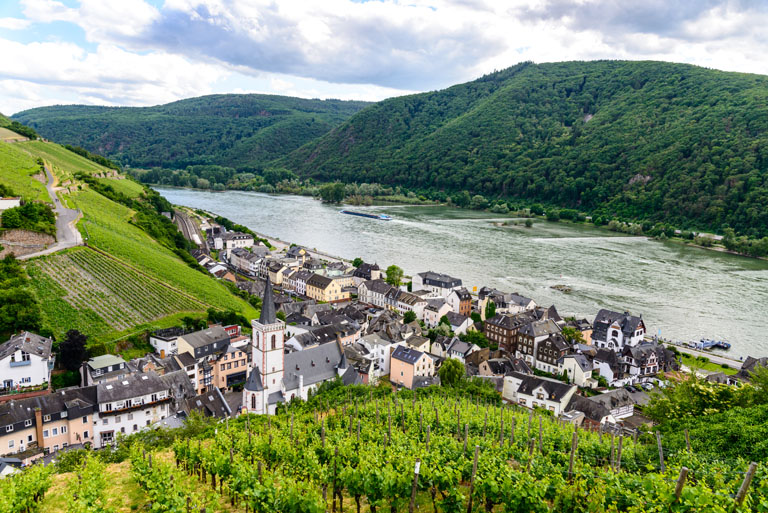
In the 14th century, the grape variety was brought by Cistercian monks from Burgundy to the Hessian monastery of Eberbach in the Rheingau. The first vines were grown by the monks in the Steinweg vineyard. Just a few years later, it made its way to the Assmannhäuser Höllenberg. While the Steinweg is now 100 percent planted with Riesling, the Höllenberg in Assmannshausen is considered the oldest vineyard in Germany still planted almost exclusively with Pinot Noir and is at the same time the steepest site in the Rheingau. The wines from the “hell” are characterized above all by their clear fruit and a delicate acid structure.
In the last two decades, Pinot Noir has gained more and more importance in Germany. Thus, between 1995 and 2018, the area under vine planted with it grew from 7199 ha to over 11,717. The steadily advancing climate change is partly responsible for this trend. Where it was already getting too hot for white grape varieties, many winemakers switched to Pinot Noir.
Baden is considered the spearhead for German Pinot Noir. With almost 5,895 hectares (as of 2019), Germany’s warmest winegrowing region is home to nearly half of the Pinot Noir vines planted here. There he finds climatic conditions similar to his native Burgundy. Selective aging in barrique is also common in Germany and adds another level of complexity to great wines with hints of spice.
Australia
Vineyards planted with the grape can now also be found in more exotic climates. Australia is considered much too hot for the Pinot grape. In Tasmania, however, growing conditions are almost ideal. Even in the higher altitudes of the “Macedon Ranges” and the low temperatures prevailing here, the grape variety produces complex and finesse-rich wines.
New Zealand
The traditional grape variety is now also found in some areas of New Zealand, where it finds ideal growing conditions in the cool regions around Central Otago, Marlborough and Martinborough. New Zealand Pinots are characterized by their sweet fragrance, subtle tannins and fruity aroma. These characteristics are sometimes strongly reminiscent of Californian Pinot Noir.
Other growing areas
Even though the grape variety is considered particularly bitchy and difficult to grow, it can be found all over the globe. Via Italy, Switzerland, Moldova, Romania down to South Africa, Chile or Argentina. Thanks to the advance of climate change, they can now be found in areas that a few decades ago were considered too cold for viticulture, such as the south of Great Britain. Here are now over 500 hectares of the grape variety, which is used on the island mainly for the production of sparkling wines.
Expansion
In the cellar, too, the prima donna among grape varieties wants to be constantly cared for. This already starts with the maceration. If the winemaker extracts too much, too many undesirable bitter substances end up in the wine. If, on the other hand, the extraction is too short, many of the color pigments and aroma substances remain in the berries.
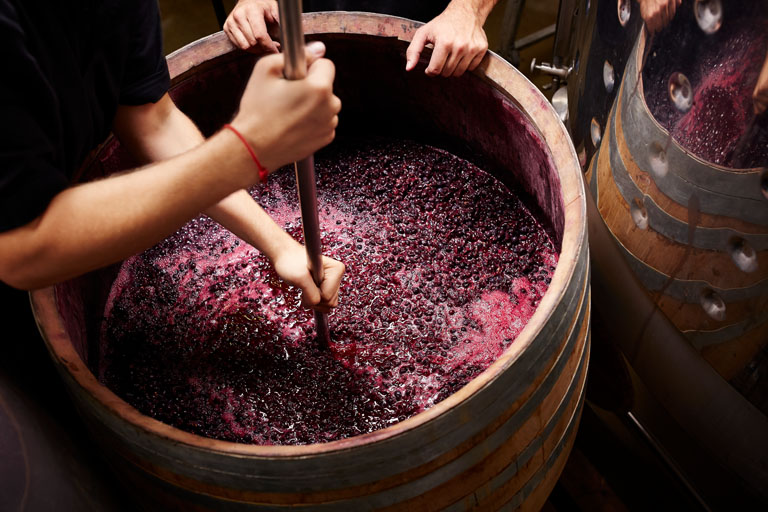
Warm maceration is often used for simple wines. In this process, the mash is stored for a few days at 30 °C to 35 °C (uncooled). The onset of fermentation and the resulting alcohol releases the tannins, color and aromatics from the berries. The fermented wine is then pumped into a separate barrel, where it is separated from the solids and allowed to continue fermenting slowly. This produces particularly light wines with little tannin. For this reason, the method of mash heating is often used upstream of fermentation for red wines with a weak color, such as Pinot Noir. In this process, the unfermented mash is heated for a short time, then pressed and cooled down again. Subsequently, only the juice is fermented. Since natural yeast bacteria are killed during heating, only pure culture yeasts can be used in this process.
Another process used for wine made from Pinot Noir grapes is cryo-maceration, also known as “cold maceration”. In this process, the mash is cooled to temperatures between 4 °C and 15 °C with the aid of dry ice and macerated for up to two weeks. The cold greatly slows down fermentation and extracts the ingredients of the grapes particularly gently. The length of the cold maceration depends on its temperature. The colder, the longer the process takes. After that, the cooling of the mash is finished and the regular mash fermentation is started. Wines extracted with this method are much more colorful and emphasize especially the fruity side of the Pinot. Since the natural yeasts merely go into a kind of hibernation due to the cold and do not die off, it is not necessarily necessary to work with pure culture yeasts.
Modern or Classic Style
Furthermore, the wines can be divided into two variants. Classic Pinot Noirs are made from highly ripe grapes and have a weaker acid skeleton. Extraction in this style is almost always done through a short maceration, resulting in wines that are bright and low in tannins. Further aging takes place in large wood or in steel.
For the modern style, the grapes are harvested at maximum physiological ripeness. Thus, the harvest begins a little earlier, which is why the berries have even more acidity. A longer maceration time and, if necessary, a preceding cold maceration ensure significantly more color-intensive wines with velvety tannins. A short aging in small barrique gives them softer tannins and brings more complex aromas. However, tact and sensitivity are required. Even a little too much time in the small wooden barrel causes the barrel to mask the wine’s subtle aromas instead of complementing them. For this reason, only a certain proportion is aged in new wood.
The tannins from the wooden barrel combine with the tannin molecules in the wine. This results in longer-chain molecular chains that exhibit a significantly smoother mouthfeel.
In addition to the two aforementioned methods, some winemakers also vinify Pinot Noir in concrete eggs or in clay amphorae. Their slightly porous structure allows some oxygen exchange, but much less than wines aged in wooden barrels. The “neutral aging” emphasizes above all the fruity to floral notes.
Wine style & taste
BodySweetnessTanninAcidityAlcohol05Trinkreif.de
Pinot Noir is almost always vinified dry and has a comparatively moderate alcohol content of about 12.5% by volume. Although sweet variants can be found, they are exclusively in the lower quality range.
In the glass it is characterized by a bright ruby red to violet. His wines are also very popular as rosé or even Blanc de Noirs (white wine made from red grapes). The latter is obtained when, like white grapes, it is pressed immediately after harvest and only the must is fermented. Since almost all the colorants are in the berry skin, you get a white wine from red grapes.
You can recognize a good Pinot Noir in its youth mainly by its fruit aromas, reminiscent of ripe cherries, raspberries and strawberries. If it has been aged in wood, typical barrel notes such as vanilla, cinnamon, chocolate, cedar and warm spices are added. With age and maturity, the fruit recedes into the background and the wines tend towards the earthy and spicy spectrum. Then notes of mushrooms, nuts, leather or forest floor appear in the glass.
On the palate, the grape variety presents itself fresh, elegant, balanced and much less powerful than other red wines. Comparatively, it has particularly little tannin, which is mostly noticeable only as a velvety mouthfeel. If you’re into “beefcake” wines, you won’t warm up to a Pinot Noir. You should try it anyway!
Pinot Noir has an extraordinary storage potential of up to several decades, provided it is a good wine. With age, the wines gain complexity and develop a broader spectrum of aromas.
Pinot Noir drinking temperature
The perfect drinking temperature for a Pinot Noir is – depending on the style – between 14 °C to 18 °C. Young and simple wines tend to be drunk at the cooler end, while great drops benefit from more temperature to best develop their aromas. A slightly chilled Pinot is also the perfect companion for summer evenings on the terrace.
The right glass for Pinot Noir
The recommended glass is a Burgundy glass with a wide goblet and slender chimney. In this way, the wine has enough surface area to best release its aromas, which are focused by the narrow neck. The perfect example here is the Zalto Burgundy glass.
However, universal glass users are – in my opinion – better served with the Gabriel glass when it comes to Pinot Noir. This has a much more elaborate goblet than the Zalto Universal.
With what food does Pinot Noir go?
Its versatility makes Pinot Noir the perfect all-rounder for food pairing. Light and simple Pinot Noir wines are suitable for some dishes where classically a white wine would be preferred. Grilled or gratinated green asparagus is a good example. Complex wines with barrique content, on the other hand, have enough power to keep up with light game dishes or duck.
For these reasons, here are some suitable dishes for the different varieties of Pinot Noir.
Matching dishes for Pinot Noir / Pinot Noir
With light and fresh Pinot Noir
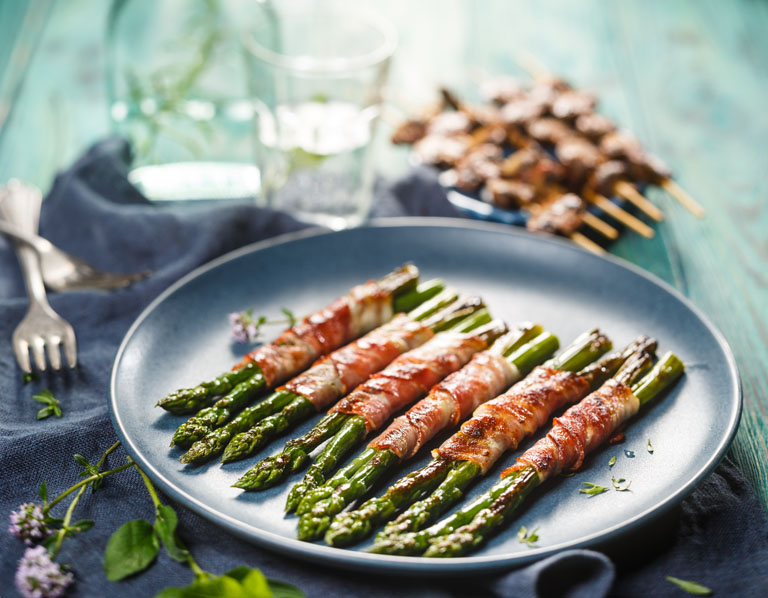
- green asparagus (grilled)
- Patés & Terrines
- Rabbit
For fruity Pinot Noir

- crispy duck e.g. with fig chutney
- fried salmon / tuna
- grilled root vegetables
To an elegant Pinot Noir
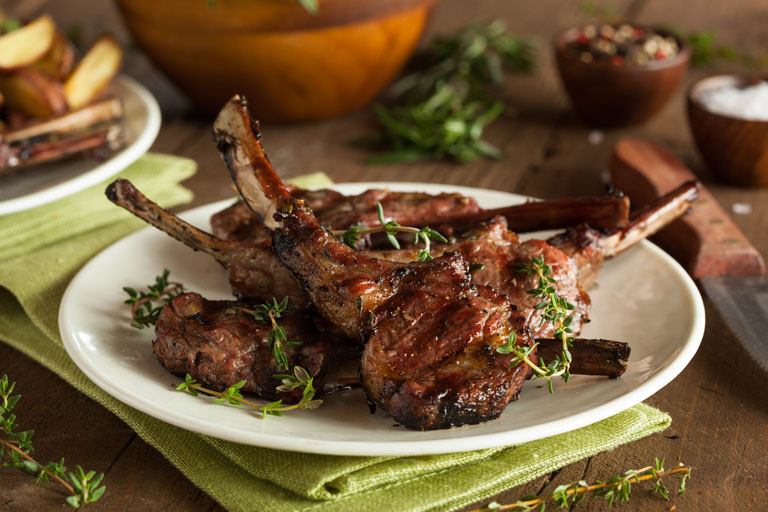
- roasted chicken breast
- Lamb chop
- Porcini risotto
For full-bodied Pinot Noir
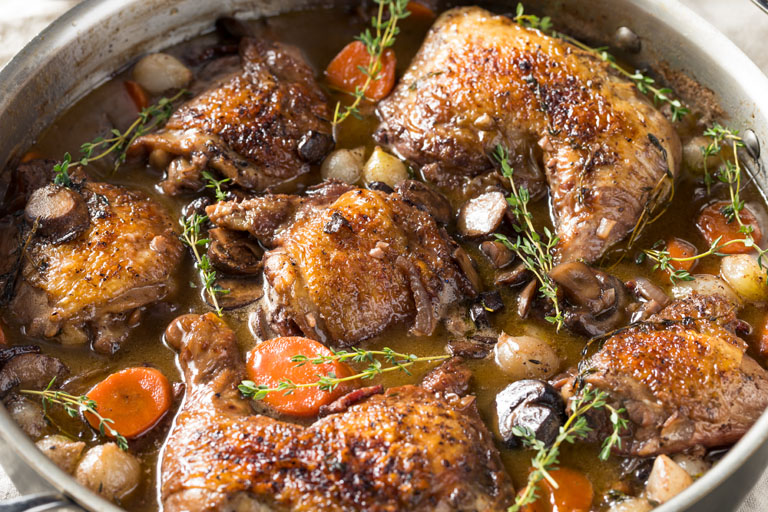
- Coq au Vin
- Roast goose
- grilled rump steak or entrecôte
